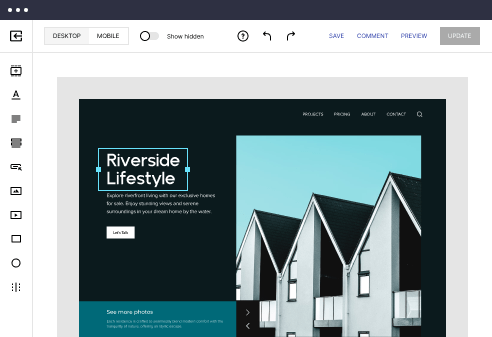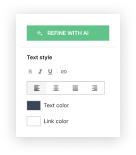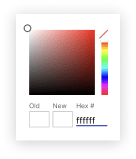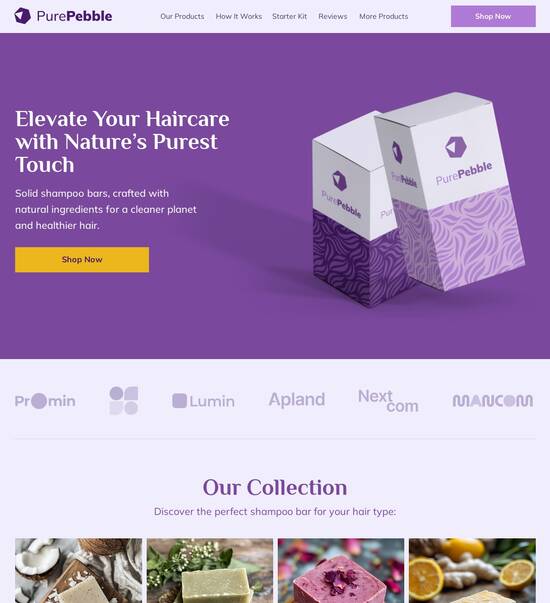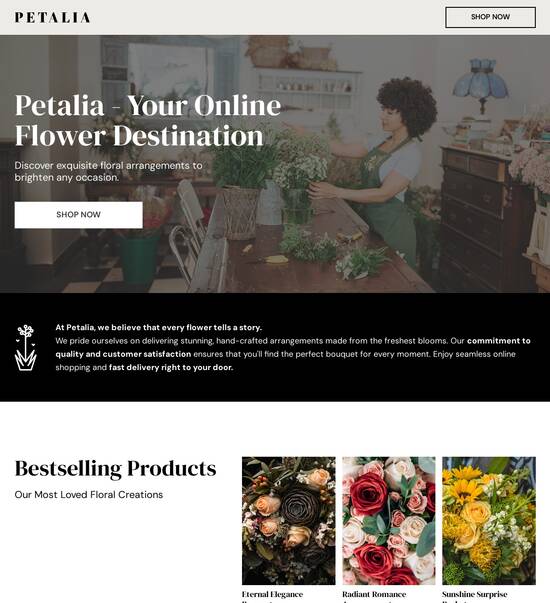
Vue.js optimized privacy policy page template
Explore Similar TemplatesAbout template
Supercharge your privacy policy page with Vue.js for outstanding performance! Learn more today.
Recommended templates
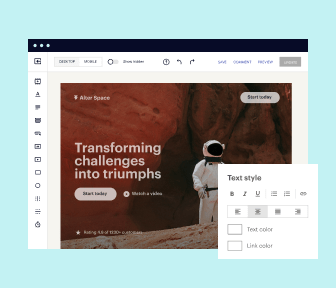
Easy to build without coding
With the intuitive drag-and-drop builder, anyone on your team can create high-converting pages without any knowledge of code or design. Make enhancements to your landing page with custom widgets using Javascript, HTML/CSS, or third-party scripts.
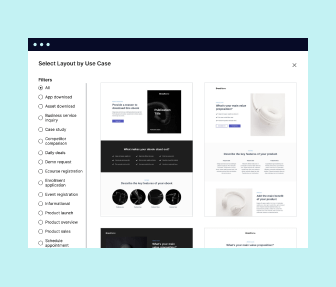
Multiple layouts for any industry and goal
Select from 500+ landing page layouts built to boost conversions across industry-specific scenarios. Customize them by adjusting fonts, adding images, and generating on-brand content with the AI assistant. Quickly scale with Instablocks® and Global Blocks that you can save, reuse, and update globally.

Loads fast and looks polished on any device
Every template is responsive, which means they present professionally on any device and load blazingly fast with our Thor Render Engine. You can also power them up with Google AMP technology to deliver an unparalleled mobile experience and drive higher conversions.
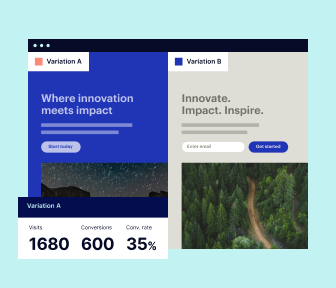
Robust analytics & experimentation
Get real-time updates and reporting across all your devices, showing the number of visitors, conversions, cost-per-visitor, and cost-per-lead. Launch AI-powered experiments, run A/B tests, and use heatmaps to analyze user behavior, then optimize your landing page to maximize conversions.
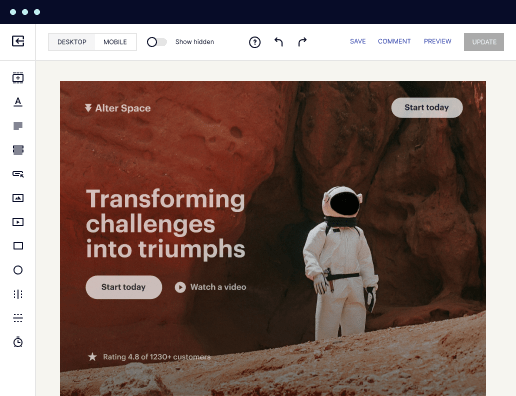
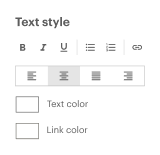
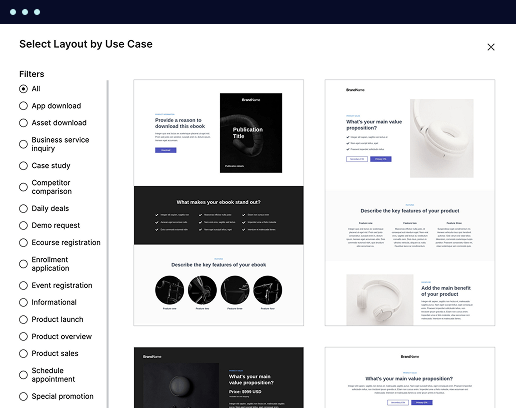

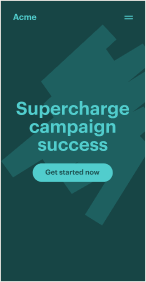
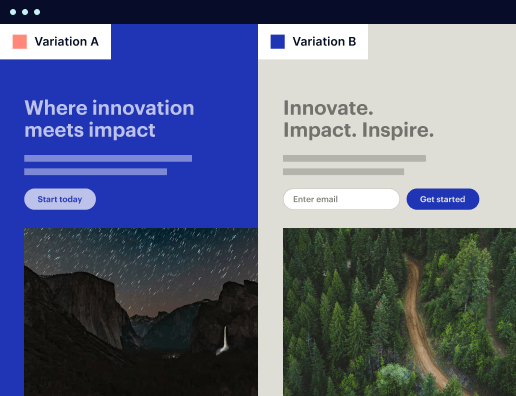
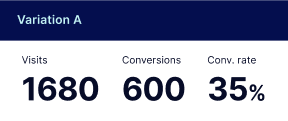
Easy to build without coding
With the intuitive drag-and-drop builder, anyone on your team can create high-converting pages without any knowledge of code or design. Make enhancements to your landing page with custom widgets using Javascript, HTML/CSS, or third-party scripts.
Multiple layouts for any industry and goal
Select from 500+ landing page layouts built to boost conversions across industry-specific scenarios. Customize them by adjusting fonts, adding images, and generating on-brand content with the AI assistant. Quickly scale with Instablocks® and Global Blocks that you can save, reuse, and update globally.
Loads fast and looks polished on any device
Every template is responsive, which means they present professionally on any device and load blazingly fast with our Thor Render Engine.
Robust analytics & experimentation
Get real-time updates and reporting across all your devices, showing the number of visitors, conversions, cost-per-visitor, and cost-per-lead. Launch AI-powered experiments, run A/B tests, and use heatmaps to analyze user behavior, then optimize your landing page to maximize conversions.
All the features you need to build lead-generating landing pages
Explore more featuresLearn how to build top-performing landing pages for any goal
FAQs
Leading the way in building high-performing landing pages





An all-in-one landing page and CRO platform
Instapage empowers marketers to create high-converting landing pages that maximize ROI for their digital campaigns. With over 100 ready-to-use templates and an intuitive page builder, Instapage provides the flexibility needed to cater to various marketing strategies effectively.
Understanding Instapage's Features
Instapage is more than just a landing page creator; it offers built-in optimization and personalization techniques designed to increase conversions. By leveraging detailed analytics and testing features, marketers can quickly iterate their strategies to achieve better results.
- High-converting templates: Choose from a library of over 100 customizable templates designed for different campaign objectives, ensuring a perfect fit for your specific audience.
- Powerful optimization tools: Utilize A/B testing and heatmaps to gain insights into user behavior, allowing you to refine your landing pages for optimal performance.
- Collaboration features: Work seamlessly with your team by providing real-time feedback and edits, enabling efficiencies in page production.
Step 1: Leverage Templates for Quick Launch
Starting with Instapage is simple. Begin by selecting a template that best fits your campaign goals.
- Identify campaign goals: Determine your objectives before selecting a template.
- Choose a template: Navigate through hundreds of options to find one that resonates with your target audience.
- Customize content: Modify text, images, and leads capture forms to suit your brand and campaign message.
Step 2: Optimize for Performance
Once your landing page is launched, it’s critical to optimize it for maximum conversions.
- Implement A/B tests: Experiment with different headlines or layouts to see what resonates best with your audience.
- Analyze user behavior: Use heatmaps to track where users click and adjust your design based on these insights.
- Review analytics: Regularly check performance metrics within the dashboard to make data-driven decisions for future campaigns.
Step 3: Personalization for Enhanced Engagement
Personalization can significantly boost conversion rates by tailoring content to specific audience segments.
- Dynamic content delivery: Use dynamic text replacement to customize messaging based on the traffic source.
- Align ads with landing pages: Ensure that your ads correspond with the landing pages for a cohesive experience.
- Segment tracking: Utilize Instapage’s data tools to track performance metrics at an audience level.
By following these steps, marketers can efficiently create and optimize landing pages that drive engagement and conversions.
Ready to elevate your marketing strategy? Explore Instapage's robust features today and start maximizing your campaign ROI.
People also ask about Vue.js optimized privacy policy page template
Vue.js optimized privacy policy page template
Understanding the necessity of a privacy policy page for Vue.js applications
In the landscape of web applications, a privacy policy page is an essential component that outlines how user data is collected, used, and protected. According to various regulations, including GDPR and CCPA, having a clear and accessible privacy policy helps build trust between businesses and their users. For Vue.js applications, where user interaction is often dynamic and data-intensive, conveying this information becomes even more critical.
From a legal perspective, businesses that handle user data face stringent requirements to disclose their data management practices. Failure to comply can result in significant penalties. Additionally, users are increasingly aware of their rights regarding data privacy, making it imperative for businesses to develop transparent privacy policies. Vue.js developers must navigate these legal implications while also providing a user-friendly experience.
Vue.js applications, characterized by their reactive data-binding and component-driven structure, present unique challenges when creating privacy policy pages. These applications often handle real-time data transactions, creating the need for not only compliance but also clarity in user communications regarding data handling practices.
Vue.js powered privacy policy page template: an overview
Leveraging a well-structured privacy policy page template within Vue.js simplifies the process of communicating privacy practices clearly and effectively. Such templates ensure that the essential components of a privacy policy are included, providing a comprehensive but manageable way to inform users about their data rights.
A well-structured privacy policy page includes sections on information collection, usage, sharing, user rights, and contact details for inquiries. It should be formatted in a way that makes it easy for users to navigate. By using a Vue.js optimized template, developers can save time while maintaining compliance with data protection laws.
The advantages of employing a Vue.js optimized template for privacy policies are numerous. With built-in responsiveness, developers can ensure that the page displays correctly on various devices, providing users with seamless access. Additionally, the modularity of Vue.js components allows for easy updates to privacy practices as regulations change.
Performance features of Vue.js privacy policy templates
User trust is closely linked to web app performance. When a privacy policy page loads quickly and operates smoothly, users are more likely to engage with its content rather than feel frustrated. Addressing performance in Vue.js applications requires careful consideration of optimization techniques that enhance speed and responsiveness.
Utilizing techniques such as lazy loading components can significantly improve initial load times. This allows only necessary sections of the page to load, ensuring users get the information they need without unnecessary delays. Additionally, code-splitting strategies help manage bundle size, which is crucial for maintaining optimal performance.
Lazy loading components streamline user experience by loading data on demand.
Code-splitting enhances bundle size management, improving overall performance.
Effective performance ensures user trust and engagement with the privacy policy.
Development services tailored for privacy compliance
As businesses continue to navigate complex data privacy regulations, many seek development services that specialize in privacy-centric web applications. These services facilitate the integration of privacy policy templates with an application's existing architecture, ensuring that compliance is maintained without compromising user experience.
Customization becomes vital here; businesses often have unique needs based on their industry and the type of data they handle. Therefore, opting for developers who understand the intricacies of GDPR and CCPA compliance can lead to more effective solutions tailored to specific business requirements.
Services offer integration with existing web apps for seamless user experience.
Customization is crucial for addressing unique business compliance needs.
Expertise in GDPR and CCPA can enhance effectiveness in privacy management.
Tools and libraries to enhance Vue.js privacy policy pages
Developers working on Vue.js applications benefit significantly from various tools that can streamline the creation of privacy policy pages. For instance, Vue Router can manage multiple sections of the privacy policy, ensuring users can easily navigate through different parts of the document without feeling overwhelmed.
State management is equally important; Vuex offers a way to manage user consent and preferences effectively. Implementing form handling libraries aids in capturing user consent accurately, further reinforcing transparency in data management practices. This logical connection between tools and user trust enhances the overall experience.
Vue Router manages multiple sections of the privacy policy clearly.
Vuex helps in effectively managing user consent and preferences.
Form handling libraries assist in capturing consent, enhancing transparency.
Bundling and managing JavaScript for optimal performance
Minimizing bundle size is crucial for achieving faster loading times in Vue.js applications. Techniques such as tree-shaking help eliminate unused code, ensuring that only the functional components are included in the final bundle. This thoughtful management not only optimizes performance but also meets users' expectations for speed.
Setting up production builds is essential for achieving optimized performance, reducing the footprint of JavaScript bundles. A smaller bundle size positively impacts SEO and user retention, as search engines favor sites that load quickly and provide a seamless experience. By enhancing performance, businesses can create a competitive edge while ensuring compliance with data privacy laws.
Tree-shaking eliminates unused code, reducing bundle size for efficiency.
Production builds optimize loading speeds, enhancing user experience.
A smaller bundle size contributes positively to SEO and user retention.
Fostering user experience through thoughtful design
User-friendly design is paramount for privacy policy pages. With a document that can often be lengthy and complicated, employing key design elements that enhance readability becomes essential. This includes the use of headings, bullet points, and concise language that communicate complex information clearly.
Incorporating interactive components can engage users, making them more likely to read through critical information. Strategies such as using FAQs or collapsible sections can help balance the depth of information with ease of navigation. Ultimately, investing in thoughtful design reflects a commitment to user experience, reinforcing the importance of transparency in data handling.
Use headings and bullet points to enhance clarity and navigation.
Incorporate interactive components to engage users with the content.
Employ strategies like FAQs to balance depth of information and ease of access.
SEO considerations for privacy policy pages
A well-structured privacy policy page can significantly influence your application's SEO. Search engines consider the clarity and accessibility of information when ranking pages. Properly formatted policies not only improve user experience but also enhance search visibility, which is critical for driving traffic to your site.
Incorporating best practices for keyword usage without sacrificing clarity is essential. The use of metadata and schema markup can further enhance visibility and ranking. By implementing these strategies, businesses can improve their overall presence online while ensuring that they comply with necessary regulations concerning privacy and user data.
Proper structure influences SEO positively through better ranking.
Keyword inclusion should be balanced with the clarity of information.
Utilizing metadata and schema enhances visibility and user engagement.
Data management and user consent
Gathering user consent within Vue.js applications requires a thoughtful approach to data management. Methodologies that emphasize transparency enable users to feel in control of how their information is used. This not only builds trust but is also essential for compliance with regulations such as GDPR and CCPA.
Employing privacy by design principles ensures that privacy considerations are integrated into the development process. This proactive approach, combined with secure management of user data, reflects a commitment to user confidence. Tools and services specifically designed for managing user data securely can further bolster this commitment.
Transparent consent-gathering fosters user trust and confidence.
Implementing privacy by design principles aids in compliance.
Secure data management practices enhance user confidence.
Creating tailored content for diverse user needs
Personalization of content on privacy policy pages can significantly improve user engagement. By understanding the target audiences and adapting language and visuals accordingly, businesses can create an inviting reading experience. This consideration resonates particularly well in sectors like financial services or education, where users may have varying levels of familiarity with data privacy.
Employing diverse communication styles enhances the effectiveness of privacy policies. Utilizing straightforward language for general users alongside detailed explanations for more informed audiences can bridge the gap between understanding and compliance. This strategic tailoring can improve overall communication effectiveness.
Personalized content strategies increase user engagement.
Adapting language based on the audience enhances understanding.
Diverse styles cater to different levels of familiarity with data privacy.
Leveraging analytics to monitor user engagement
Monitoring user interactions with privacy policy pages is essential for continuous improvement. Tools like Google Analytics can provide insights into user behavior, helping businesses understand how effectively their policies are being read and followed. By analyzing engagement metrics, companies can adapt their policies to meet user needs more effectively.
Heatmaps serve as an effective visualization tool for tracking how users interact with privacy policies. By understanding user behavior, businesses can adjust the layout or content of their privacy policy pages, ensuring that critical information is easily accessible. This data-driven approach reinforces the commitment to user-centered design while adhering to privacy regulations.
Google Analytics tracks user behavior effectively for analysis.
Heatmaps visualize interactions, aiding in layout adjustments.
Data-driven strategies enhance user experience and compliance.
Case studies: successful implementation of Vue.js privacy policy templates
Several businesses have successfully implemented Vue.js privacy policy templates, paving the way for enhanced compliance and user trust. For example, an e-commerce platform saw a significant increase in user confidence after updating their privacy policy page with a well-structured Vue.js template that clearly outlined user rights and data usage.
Another tech company leveraging Vue.js templates reported measurable improvements in user engagement after simplifying their privacy policies. These case studies illustrate the tangible benefits of adopting optimized page structures that enhance readability, trust, and overall performance while maintaining compliance with regulations.
E-commerce platforms improved user confidence through clear policies.
Tech companies reported increased engagement after policy updates.
Successful implementation highlights value of optimized page structures.
Future trends in Vue.js development for privacy and security
As technology evolves, so too will the way businesses approach privacy policies within Vue.js applications. Emerging trends, such as integrating machine learning for enhanced data protection, are on the horizon. This advancement could lead to more proactive data management strategies that better reflect user expectations for privacy.
Predictions indicate that user data regulations will continue to evolve, and businesses need to stay ahead of these changes. Vue.js is well-positioned to adapt, allowing companies to create flexible, privacy-compliant applications as new tools and frameworks emerge to support this essential aspect of web development.
Machine learning offers enhanced strategies for data protection.
User data regulations are expected to evolve continuously.
Vue.js is adaptable for accommodating future privacy requirements.
Ready to skyrocket conversions?
Supercharge your ad campaigns with high-performing landing pages
Get started